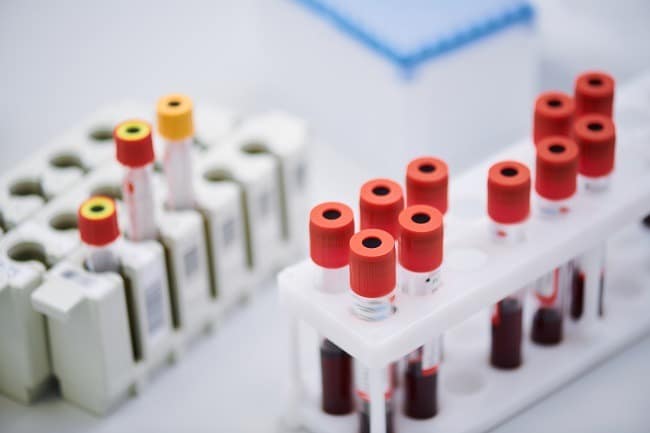Introduction
All men with a prostate are at risk for prostate cancer. While not all men will develop the disease, prostate cancer is the second most common cause of cancer-related deaths in men in the United States, behind only lung cancer. It’s my mission to increase men’s survival rate by educating men to know the signs and symptoms of this disease, get regular prostate cancer screening, and personalized treatment to beat it back.
Why is the prostate cancer guide a must-read resource?
Reading this guide can help you gain the knowledge you need to stay ahead of the disease’s development. Prostate cancer is a curable disease only when it is early diagnosed. The high survival rates are based on the efficiency of early diagnosis and the slow-growing characteristic of prostate cancer. But, as we all know, it is better to prevent a disease, than to treat it.
Prostate cancer prevention
Section 1 – Prostate cancer prevention – emphasizes the need to always be aware of the factors that can lead to prostate issues and act upon minimizing them. As you will see, there are two series of risk factors. There are factors that can be controlled and factors that people have no control over. For example, while a man does not have any control over his genetic heritage, he can decide to follow a prostate-friendly diet and to exercise more.

Also, there are numerous vitamins and supplements that contribute to a healthy prostate. Section 1 reveals them in detail and empowers you with actionable insights to be able to prevent this disease as much as possible.
Prostate cancer causes and risk factors
Section 2 – Prostate cancer causes and risk factors – provides additional information on each of the most common risk factors. Here you will learn more about what aspects are having a higher influence on the development of the disease. Also, you will learn whether you should be concerned about these factors or not. We suggest paying more attention to this section in order to determine if you belong to a risk group. If, while reading this section, you determine that you are in one or more risk groups, do not hesitate to schedule an appointment with your physician to have a prostate exam.

Prostate cancer symptoms
Section 3 – Prostate cancer symptoms – focuses on the symptoms men need to be aware of. Prostate cancer occurs when prostate cells start to grow abnormally. In most cases, this is a slow-growing disease, a fact that made it be known as a silent killer. However, there is a series of symptoms that can be alarming. This section provides insights into what are the early signs and symptoms men need to understand. These symptoms may be common to those of other non-cancerous prostate conditions. A medical check-up will reveal the exact problem.

However, you should always remember that when symptoms start to appear, cancer may be already advanced. That is why regular prostate screenings are vital to staying ahead of any serious problems. If you experience one or more symptoms from the ones mentioned in this section, consider scheduling an appointment with a urologist. Most cancers detected at an early stage are curable and are not life-threatening. Also, bear in mind that your symptoms may not indicate necessarily the presence of prostate cancer. Only a urologist can clarify the issues and provide you with all the information you need.
The diagnosis of prostate cancer
Section 4 – Prostate cancer diagnosis – deals with the different diagnosis methods that are being used in order to detect the presence of cancer. Medical advances have led to the development of new, effective methods of diagnosis. These new tests can not only detect the presence of cancerous cells but also determine the exact location and prognosis of the disease, establishing the stage groups and survival rates. In this section, you will gain a better understanding of what a screening procedure implies and what diagnosis methods are being used. The doctor will decide what further procedures are necessary in order to determine the exact location of the cancerous cells and their development. The PSA test, PSMA PET, MRI scan, CT scan or even genetic tests are just a few of the available tests for prostate cancer detection. Learn more about each of them in this section.

Prostate cancer stages and survival rates
Section 5 – Prostate cancer stages and survival rates – sheds light on the subject of staging and survival rates. Based on the results of the diagnosis and screening procedure, a pathologist can determine what is the exact stage of cancer. There are 2 types of staging for this type of cancer: clinical stage and pathological stage. Each of them is being explained in this section. Also, here you will learn what is the Gleason Score and how to understand it. What is more, you will gain a deeper knowledge of what are the 4 different cancer stages and what are their characteristics. Finally, based on each stage, you will have a clearer view of what are the expected survival rates.
Prostate cancer treatment options
Section 6 – Prostate cancer treatment – focuses on the wide range of treatment options that proved their efficiency in the fight against prostate cancer. The options a patient is offered vary depending on the stage of cancer and whether it is localized, locally-advanced, or advanced. For each type, you will be provided with a description of the disease and the recommended treatment options. Also, this section is having 4 sub-sections, providing details on specific treatments.
The sub-sections of the 6th section of the prostate cancer guide
The first sub-section offers in-depth information about robotic prostate surgery using the da Vinci robot. Here you will learn what it is, how it is performed, and what are its benefits. The second part is centered around the concept of active surveillance, a treatment plan that involves closely monitoring prostate cancer’s development. By reading this part you will understand what does this treatment plan involves, to whom it is recommended, and what are its advantages and disadvantages. The third sub-section is a detailed list of the non-surgical treatment options available for prostate cancer. For each treatment, there is a description and a list with the associated possible side-effects. Also, this part provides information about the patients to whom these procedures are recommended. The fourth and last sub-section includes a list of 13 prostate cancer treatment options, along with their pros and cons.
Life after prostate cancer and the Prostate cancer quiz
Section 7 – Life after prostate cancer – provides insights on life’s quality after following cancer treatment. Usually, the journey a man has to go through when diagnosed with prostate cancer is long and painful. The quality of life men have after being treated for cancer varies depending on a series of factors. These include the treatment choice, physical condition, and surgeon’s experience. This last section of the guide also contains two sub-sections dealing with continence and sex after prostate cancer.

The first sub-section explains whether men should be worried about incontinence after prostate surgery and provides practical advice to regain urinary continence after surgery. The second sub-section gives detailed information about the resumption of sexual function after prostate surgery. This part contains large descriptions of the most used treatment options for sexual dysfunction. Also, you will discover what life changes you should expect and what can be done for improving the quality of your life after cancer treatment.
Finally, do not forget to take the prostate cancer quiz. This is an activity consisting of 10 essential questions about prostate cancer. At the end of the quiz, you will know what is your knowledge level.
Your health is not something to be postponed! Read the prostate cancer guide, get informed, and be aware of any signs or symptoms that may indicate a problem. We are responsible for caring for our health. Do not let prostate cancer interfere between you and your quality of life!

